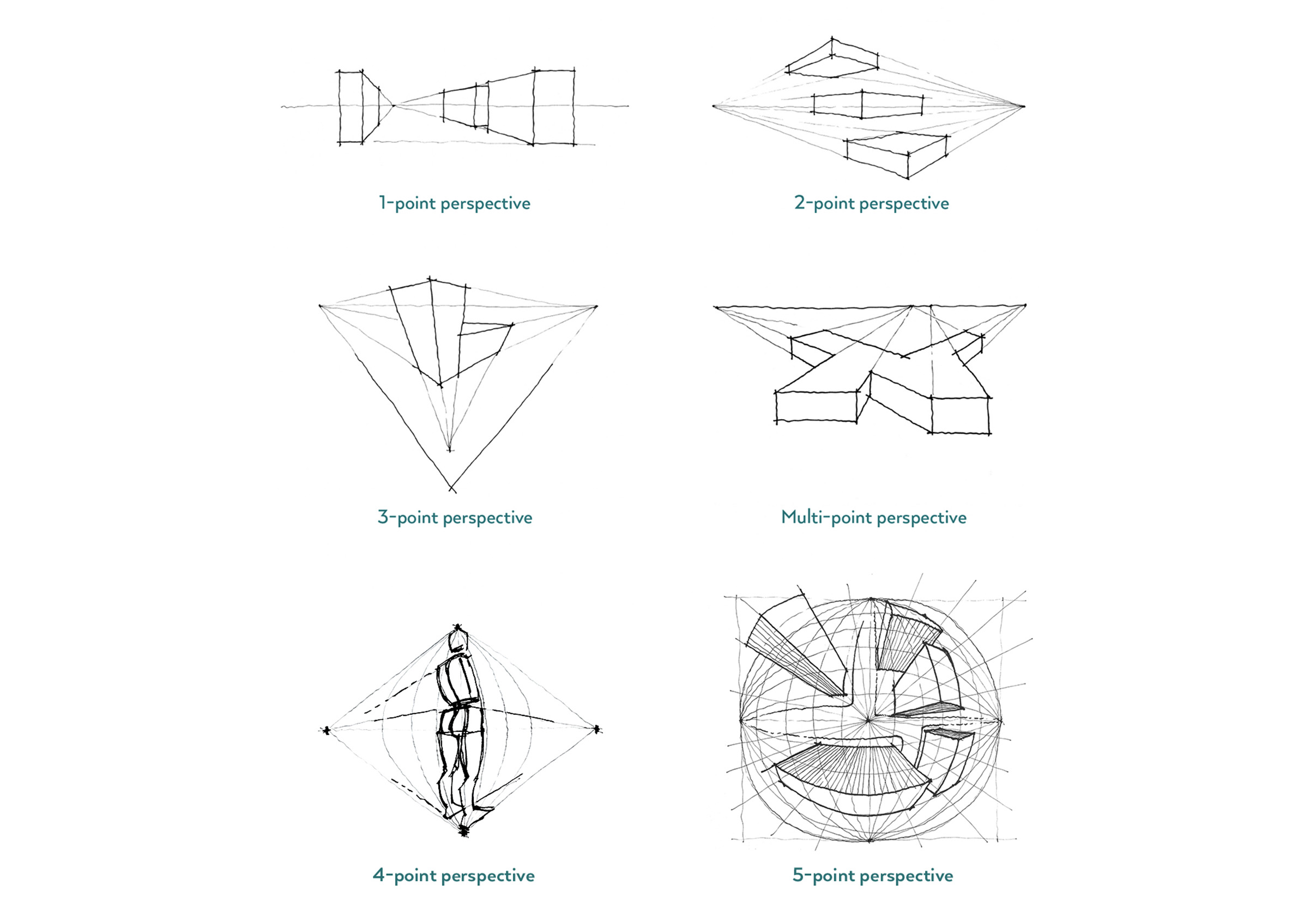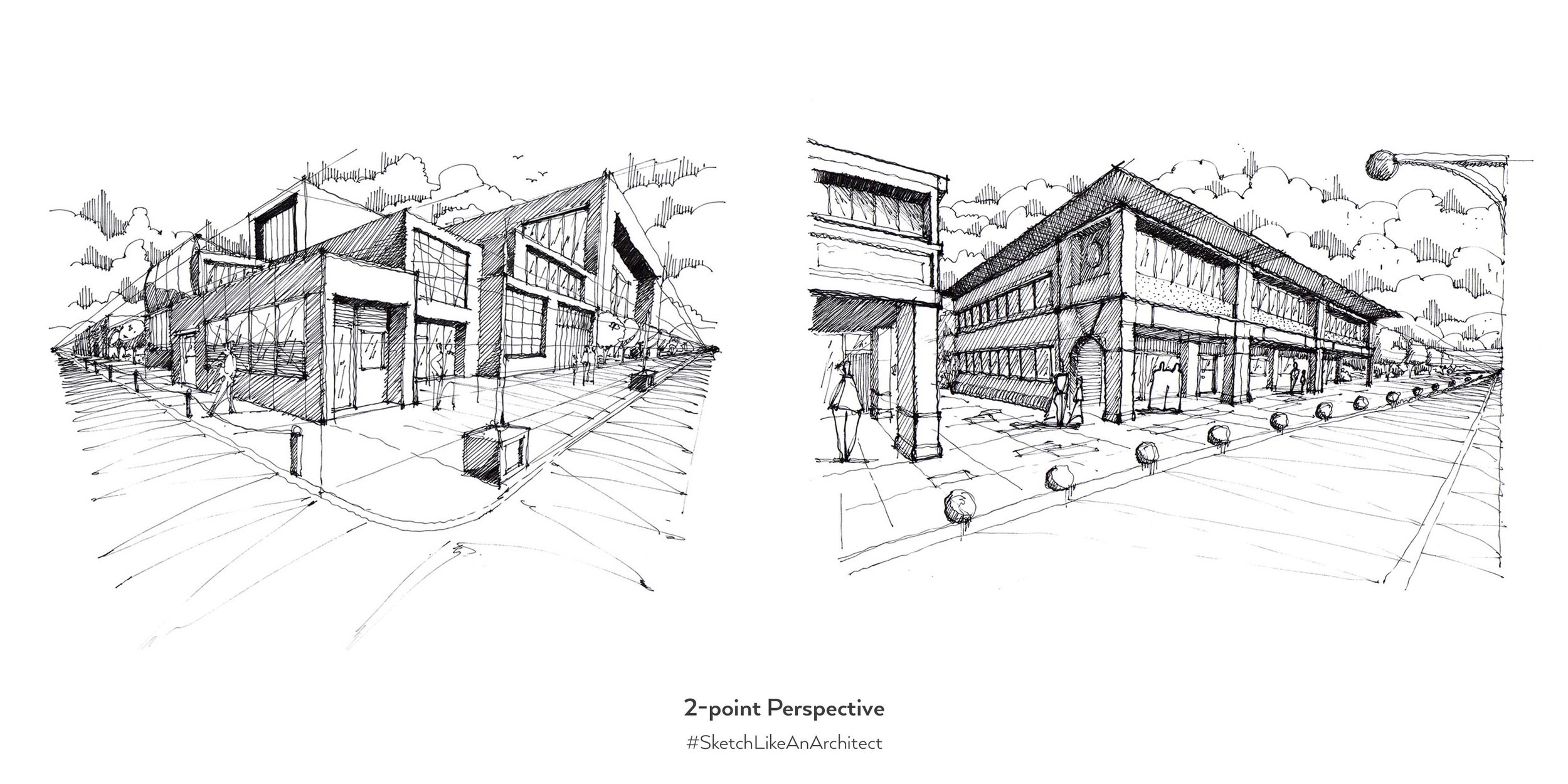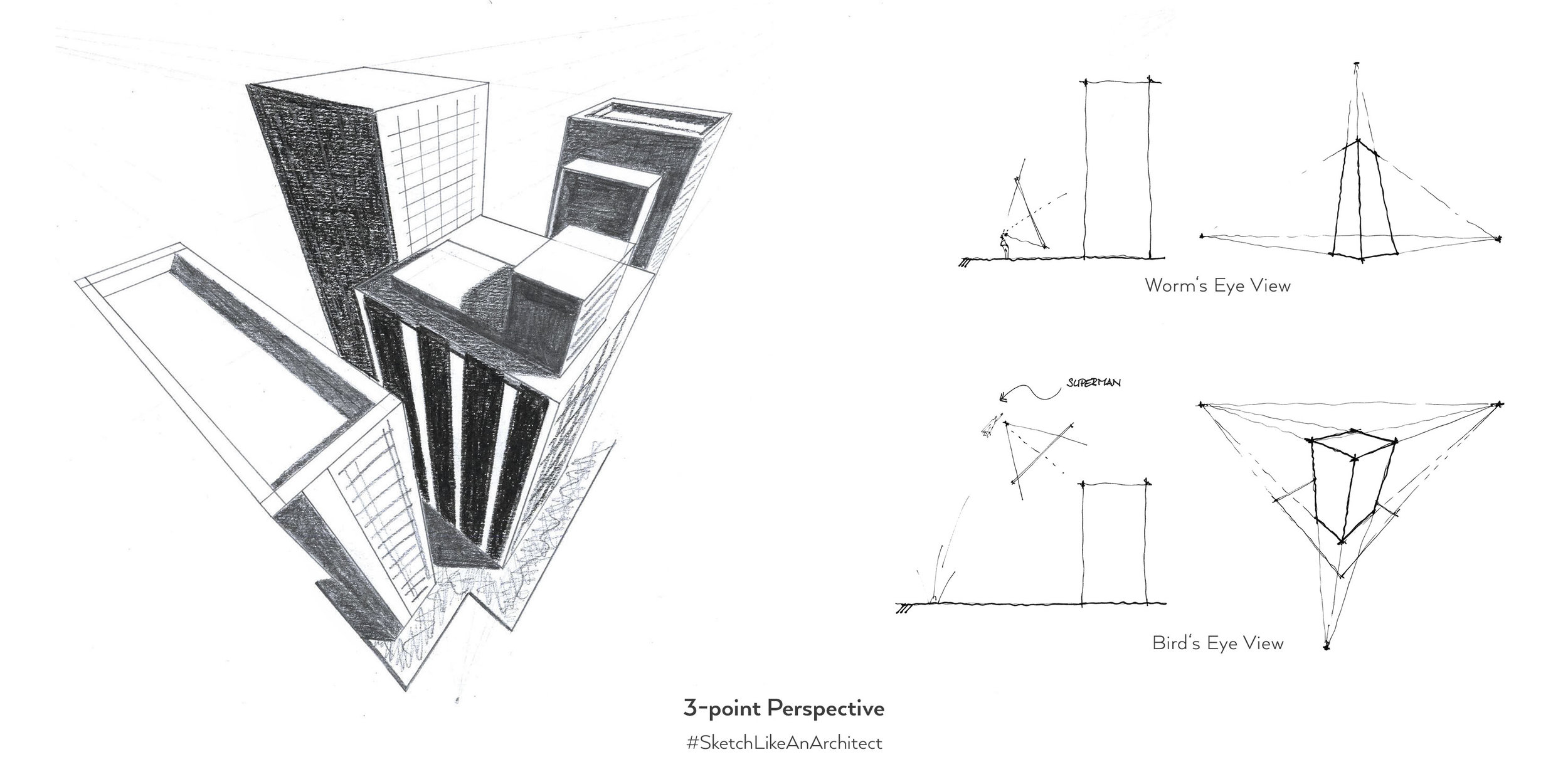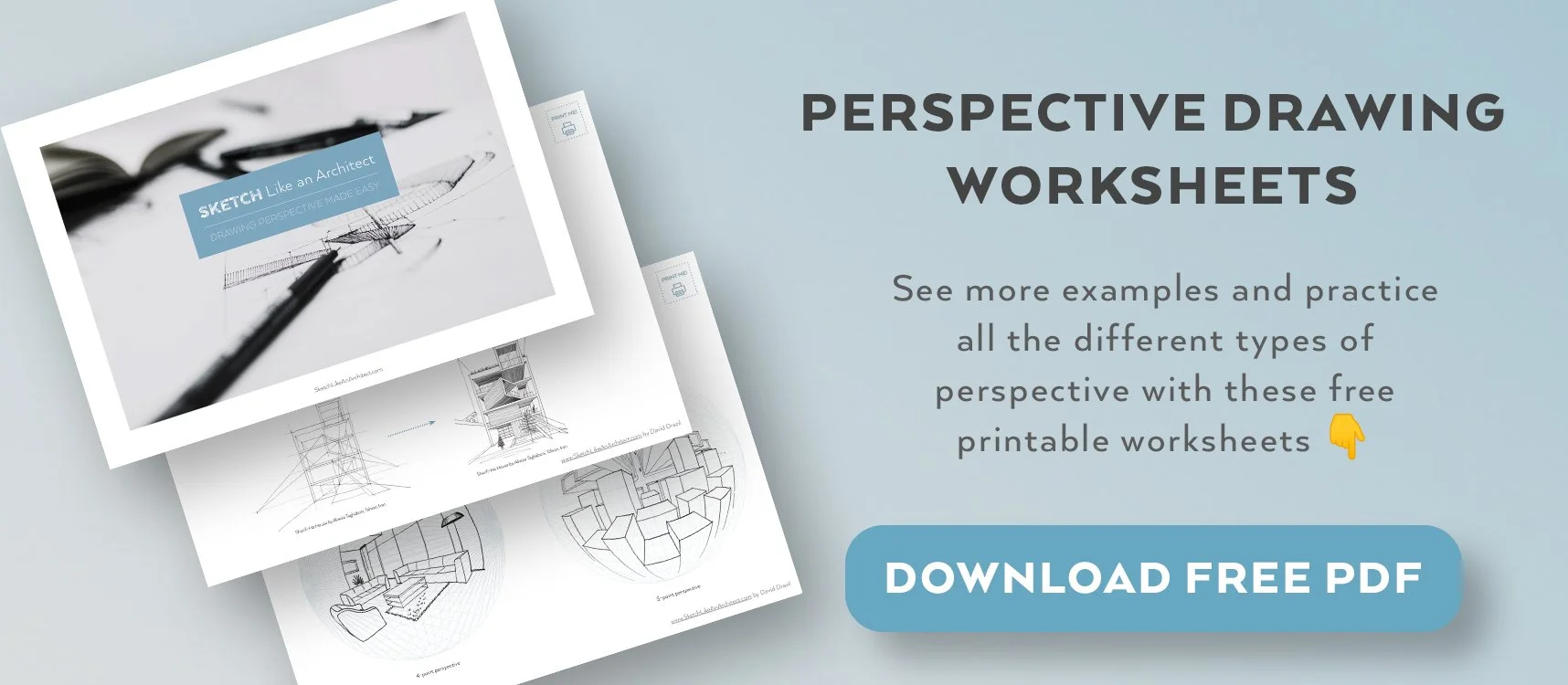What Type of Perspective Should You Use?
There are several types of perspective - so which one should you use and when?
In this article, you’ll get an overview of linear and curvilinear perspective types and I’ll show you examples for each of them. By the end of this blog post, you’ll know what each type of perspective is suitable for and when to use it. Let’s dive into it!
What is perspective?
The way we see the world is driven by rules of perspective. Perspective in sketching is a tool how to create a realistic illusion of 3-dimensional space. Everything we draw, from an apple to a spaceship, needs to follow the rules of perspective in order to look realistic.
Perspective works like an invisible grid helping us to place objects in our spatial composition. It is a way how to describe 3-dimensional space and express depth on a 2D plane.
Linear Perspective
In linear perspective, there are 4 major types of perspective defined by the number of primary Vanishing Points lying on the Horizon Line:
1-point perspective,
2-point perspective,
3-point perspective,
and Multi-point perspective.
Let’s look at some examples of each of the types.
1-point Perspective
1-point perspective (aka frontal or central perspective) has only one vanishing point on the horizon line located somewhere within the picture plane and all the orthogonals converge towards it.
When to use this type of perspective:
when you want to create a single strong focal point in your sketch (with orthogonals leading our attention to it)
for close to front view, seeing one side of an object (almost) flat
for straight on looking points of view
for view perpendicular to the scene we draw
Common examples of such perspectives depict a view down the street, railways, or frontal interior views (central perspective).
2-point Perspective
2-point perspective (aka angular perspective) has two vanishing points on the horizon line, which don’t necessarily need to be within the picture plane.
When to use this type of perspective:
when you’re seeing two perpendicular sides of an object, both distorted/foreshortened
for non-perpendicular point of view
In 2-point perspective, the focal point of the scene is usually NOT located near the vanishing points, but rather following the rule of thirds composition.
Common examples of such perspectives depict a street corner view or a corner view of an interior showcasing a single dominant object (e.g. a bed or a sofa).
Vertical 2-point Perspective
This sketch is still a 2-point perspective - just with a little twist. The horizon line here is vertical which allows us to simulate the dynamics of 3-point perspective with only two vanishing points. What’s important here is to realize that the horizon line in perspective doesn’t always represent the real physical horizon.
If you want to master the basic perspective rules and other 5 steps to awesome perspective sketches, check out my online course Sketch Like an Architect: Step-by-Step From Lines to Perspective.
3-point Perspective
3-point perspective uses three vanishing points where two of them are on the horizon line and the third is either high above the horizon line or way below it. There are two basic types of 3-point perspective based on the position of the horizon line:
Worm’s Eye View - imagine yourself looking high up. The horizon line is situated very low.
Bird’s Eye View - imagine being Superman flying over a city and looking down.
See the above sketch and the diagrammatic explanations of these two types.
3-point perspective offers more dynamic views thanks to all the three spatial directions converging towards their own vanishing points and creating more diagonals in our scene.
Multi-point Perspective
The last type of linear perspective is Multi-point perspective - it is the case when there are more than two primary vanishing points on the horizon line. Surprisingly, this is the most common type of perspective we can observe in the real world. Here’s when you should use multi-point perspective:
when objects in our scene don’t lie in the same orthonogal grid
when sketching curved roads
when you want to add visual variation, breaking out from a (boredom of a) single orthogonal grid
when sketching non-orthogonal objects (like pentagon shape)
See the examples above of the multi-point perspective sketches. Even though the staircase example can seem like a 1-point perspective, it is indeed a multi-point one as each of the steps converge to its own vanishing point on the horizon line.
Curvilinear Perspective
Curvilinear perspective is another type of projection, different from all linear perspectives as it introduces curves into the grid system. The curvilinear perspective grids work with 4, 5, and even 6 primary vanishing points. They can be also divided into these categories based on their type of field of vision:
Cylindrical field of vision (4 vanishing points)
Hemispherical field of vision (5 vanishing points)
Spherical field of vision (6 vanishing points)
You can see examples of 4- and 5-point perspectives in the image above. Curvilinear perspective represents more advanced ways of projections (like fish-eye effect) and they are fun to experiment with, but they are more suitable for comics illustrations than for common architecture purposes. Nevertheless, it’s always a good idea to broaden our knowledge by stretching the usual boundaries and learning from other visual areas.
Recently I launched my new PDF Handbook focused on Perspective Drawing where I’ll dive much deeper into:
advanced perspective,
how to draw more complex and organic shapes,
how to improve your imagination, and much more.
Click the button below to learn more about and see what’s inside!
Happy sketching,
David
#SketchLikeAnArchitect
PS: Explore the Resources for related downloadable Freebies and more educational materials on architectural sketching!








